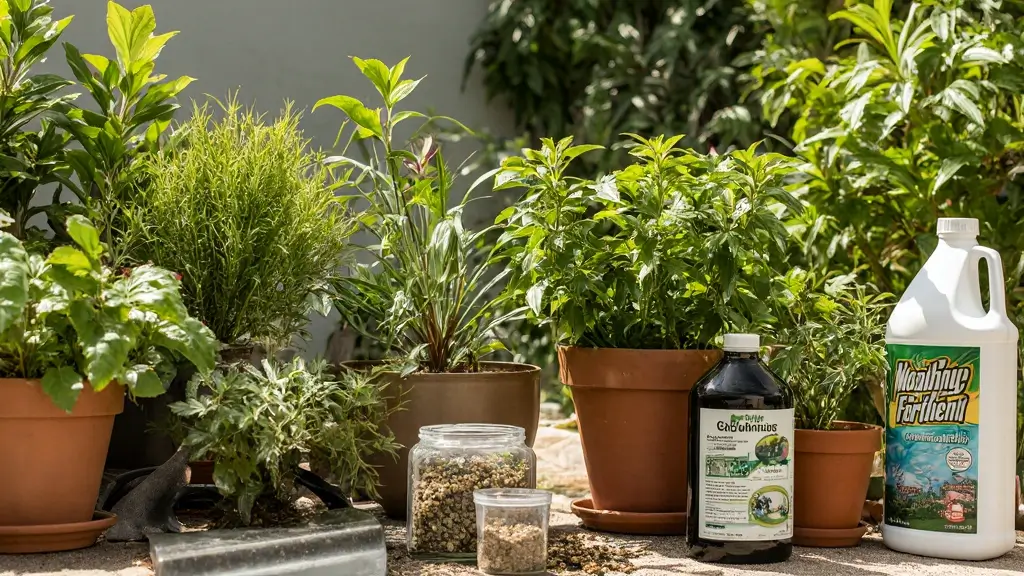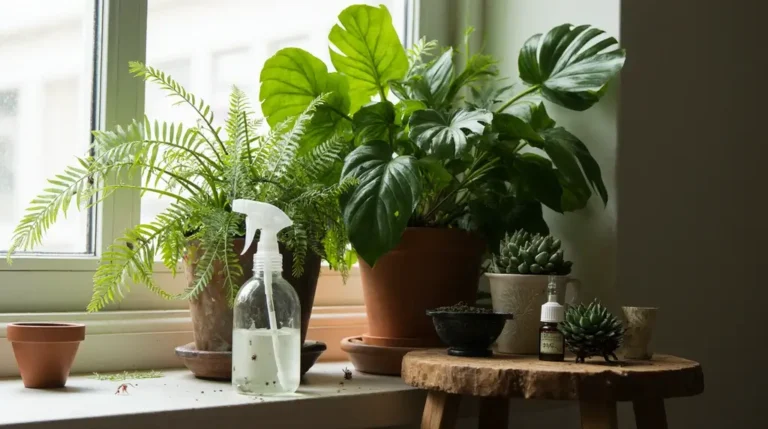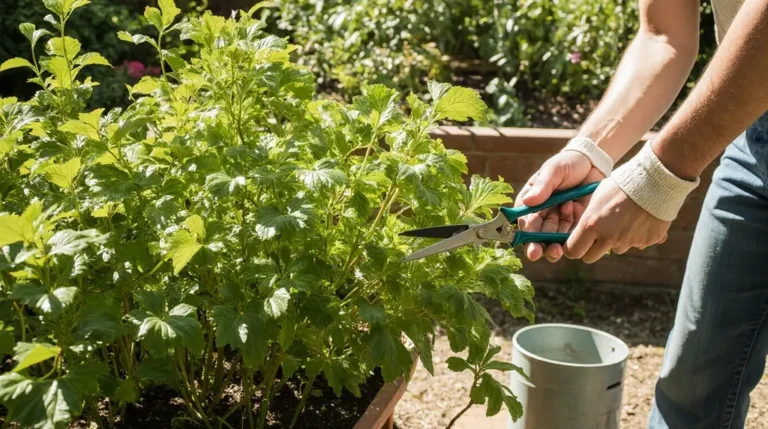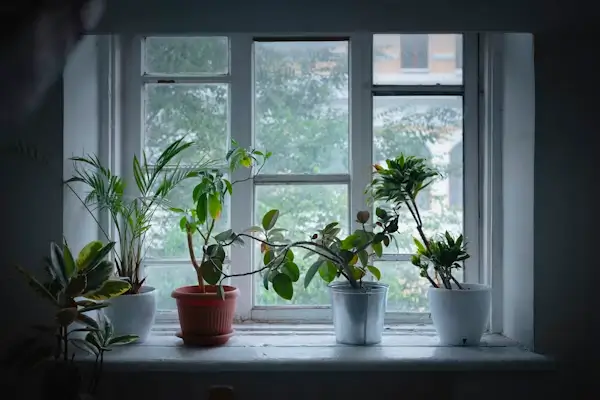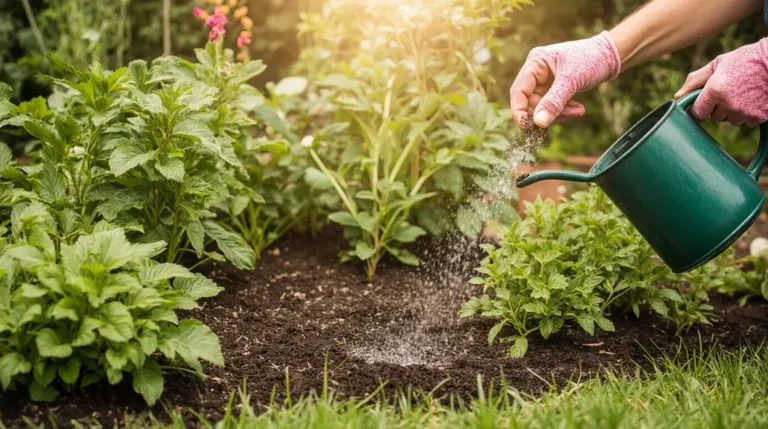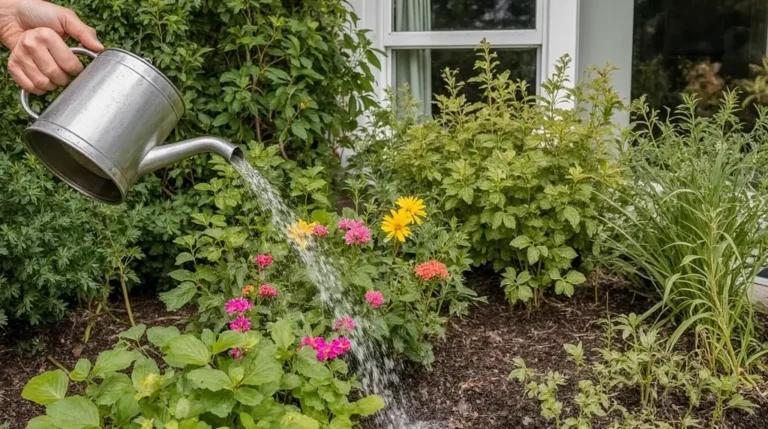Best Fertilizers Plants for Indoor and Outdoor in 2025
Table of Contents
Introduction To Best Fertilizers Plants
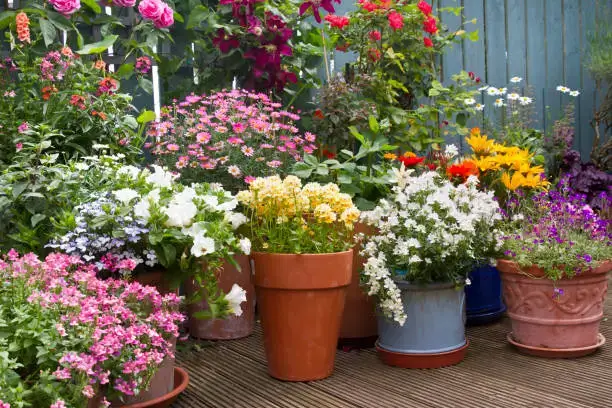
So you’re trying to figure out what best fertilizers plants need to actually thrive instead of just survive? I totally get it! I used to be that person who’d water my plants and wonder why they looked sad and droopy. Turns out, they were basically starving. Who knew? Looking to take your plant care to the next level? Check out our handy product that makes maintaining healthy, thriving plants easier than ever.
Whether you’ve got a jungle of houseplants taking over your living room (guilty!) or you’re trying to keep your outdoor garden from looking like a plant graveyard, getting the right nutrients is kind of a big deal. With all the fertilizer options out there in 2025, it can feel pretty overwhelming. But don’t worry – I’ve done the research (and made plenty of mistakes) so you don’t have to. get more info about How to Save Dying House Plants;
Here’s the thing about indoor plant care – it’s way more than just remembering to water them. Your plants are basically stuck in pots, completely dependent on you for everything. And when it comes to organic plant food versus synthetic stuff, well, there’s definitely some stuff you should know before you start dumping random fertilizer on your green babies.
1. Why Fertilizing Houseplants is Essential (and When It’s Not)
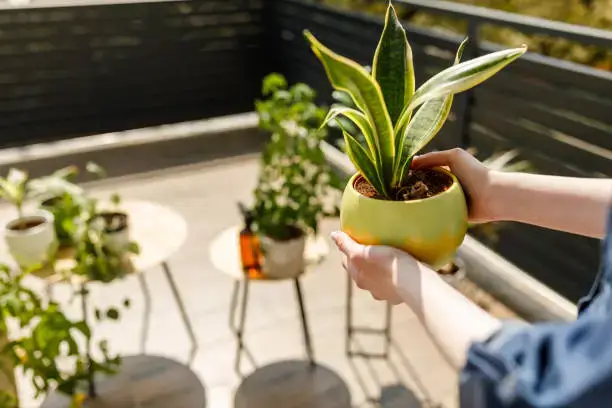
The Critical Role of Nutrients in Potted Plants
Okay, so here’s what I wish someone had told me earlier: houseplants are basically prisoners in pretty pots. They can’t do what outdoor plants do – you know, spread their roots around looking for nutrients, getting help from earthworms, or benefiting from all that natural composting that happens outside. Nope, they’re stuck with whatever you give them.
When your plants don’t get proper nutrition, they basically go into survival mode. You’ll get those sad, spindly leaves that look like they’re reaching for help, or growth that just stops altogether. It’s like trying to run a marathon on an empty stomach – technically possible, but you’re not gonna have a good time.
The “Golden Rule”: Less is More
I learned this one the hard way, and let me tell you, killing a plant with “kindness” is a real thing. More fertilizer doesn’t equal happier plants – it equals crispy, burnt roots and a dead plant that you’ll feel guilty about for weeks.
Think of plant feeding like seasoning your food. You can always add more salt, but once you’ve over-salted something, good luck fixing that mess. Same deal with fertilizer. Start with less than what the package says (yeah, really!) and work your way up if needed.
When to Hold Back: Times Not to Fertilize
Winter/Fall Dormancy: Most of your houseplants are basically hibernating during the colder months. Fertilizing them is like trying to force someone to eat a big meal right before bed – it’s just not gonna end well.
Sick Plants: This is like giving energy drinks to someone with the flu. Fix whatever’s wrong first (root rot, bugs, stress) before you start pushing nutrients. Your plant needs to heal, not get pumped full of food it can’t even use.
Just Repotted: Fresh potting soil is like a plant buffet – it’s already loaded with everything your plant needs for a while. Give it a few weeks to settle in before you start the feeding routine.
2. Decoding Plant Food: Understanding NPK and Micronutrients
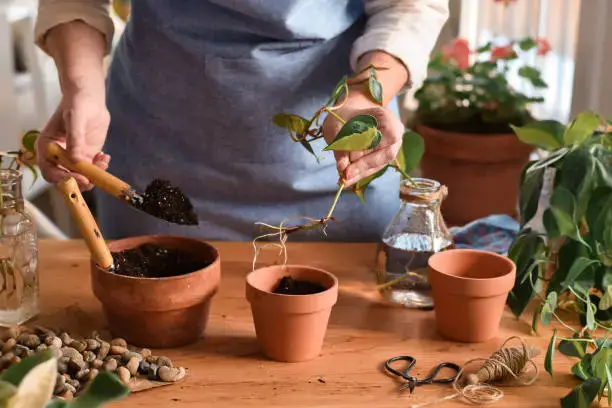
What are NPK Numbers? (Nitrogen, Phosphorus, Potassium)
You know those three numbers on every fertilizer package that look like some kind of secret code? That’s your NPK ratio, and it’s actually pretty simple once you get it. It’s just the percentage of the three main nutrients your plants are craving.
So if you see 10-10-10, that means 10% nitrogen, 10% phosphorus, 10% potassium, and the rest is basically filler and trace nutrients. It’s like reading a nutrition label, but for plants!
Nitrogen (N): For Lush, Leafy Growth
Nitrogen is like plant caffeine – it gets everything moving and growing. It’s what makes your plants look gorgeously green and full instead of pale and sad.
If your plant’s leaves are turning yellow (starting with the older ones), or if your once-lush plant looks like it’s on a diet it didn’t sign up for, you’ve probably got a nitrogen problem.
Phosphorus (P): For Strong Roots and Abundant Blooms
Think of phosphorus as your plant’s foundation builder. It’s all about strong roots and beautiful flowers. This is especially important when you’re dealing with seedlings (those tiny baby plants need all the help they can get) or when you want your flowering plants to actually, you know, flower.
Potassium (K): For Overall Plant Health and Resilience
Potassium is basically your plant’s immune system booster and stress manager rolled into one. It helps with everything from disease resistance to dealing with temperature changes. It’s like giving your plants a multivitamin and a therapy session at the same time.
Beyond NPK: The “Tiny Nutrient Heroes” (Micronutrients and Trace Elements)
Your plants also need tiny amounts of stuff like calcium, iron, magnesium, and a bunch of other nutrients that sound like a chemistry class. These might be needed in smaller amounts, but they’re super important for preventing weird issues like yellow leaves with green veins or weak, bendy stems.
And here’s a pro tip: if you really want to get serious about this, you can actually test your soil to see what’s missing. It’s like getting a blood test for your plants – kind of nerdy, but surprisingly helpful!
3. Choosing the Right Fertilizer Form: Liquid, Granular, Pellets, and More
Picking the right type of fertilizer is kind of like choosing between instant coffee and a French press – they’ll both get the job done, but the experience is totally different.
Liquid Feeds: The Quick Nutrient Boost
Liquid fertilizers are like plant energy drinks. They work fast because the roots can slurp them up immediately. Perfect for when your plant looks like it needs an intervention, or when you want to see results pretty quickly.
You can even spray diluted liquid fertilizer directly on the leaves (called foliar feeding, if you want to sound fancy), and they’ll absorb it right through their pores. Pretty cool, right?
The downside? You’ll be doing this every couple of weeks during growing season, so it’s not exactly low-maintenance.
Granular Fertilizers: Slow and Steady Nutrient Release
These little granules are like time-release capsules for your plants. You mix them into the soil, and they slowly break down over a month or two, feeding your plants gradually.
This is perfect if you’re the type of person who travels a lot or just wants to set it and forget it. Plus, if you go with organic plant food granules, you’re less likely to accidentally nuke your plants with too much nutrition at once.
Slow-Release Pellets/Spikes: The “Set and Forget” Solution
These are basically the crockpot of plant fertilizers. You stick them in the soil, and they do their thing for months – sometimes up to six months! Super convenient, though they might not spread the nutrients evenly in really big pots.
Water-Soluble Powders: Versatile and Rapid-Acting
These powders dissolve completely in water, so you get total control over how strong you want to make your plant cocktail. Great for when you’ve got different plants with different appetites, or when you want to give some extra TLC during growing season.
Specialty Mixes: Tailored for “Picky Plants”
Some plants are just divas (looking at you, orchids!). Specialty fertilizers for things like orchids, African violets, or succulents take the guesswork out of indoor plant care. They’re formulated specifically for those particular plant personalities, which honestly makes life so much easier.
4. Organic vs. Synthetic Fertilizers: A Balanced Perspective for Indoor Plants
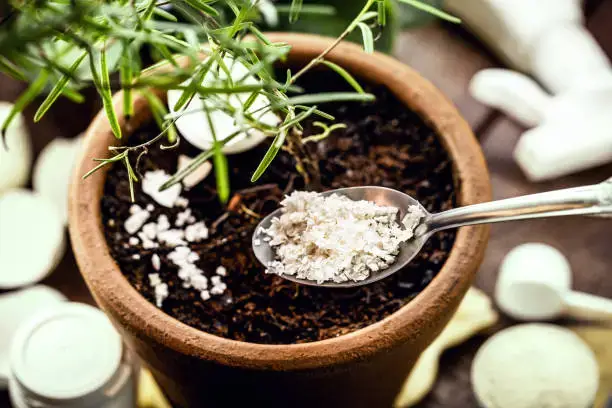
Organic Fertilizers: Nurturing Nature Indoors
The Good Stuff:
Soil Health: Organic plant food is like probiotics for your soil. It improves the texture, helps it hold water better, and feeds all those tiny beneficial microbes that help your plants thrive.
Safety: Way safer if you’ve got kids, pets, or you’re just paranoid about chemicals in your house. Nobody wants their cat getting sick from licking a plant.
Sustainability: You can make a lot of organic fertilizers from kitchen scraps, which is pretty satisfying and good for the environment.
Gentle Release: Organic stuff releases nutrients slowly, so you’re less likely to accidentally overdose your plants.
The Not-So-Great:
Speed: Organic fertilizers are like that friend who’s always fashionably late. They work, but don’t expect instant results.
Smell/Pests: Some organic options can smell pretty funky indoors (fish emulsion, I’m looking at you), and might attract fruit flies or other unwanted visitors.
Cost: The fancy organic stuff can hit your wallet harder than synthetic options.
Synthetic Fertilizers: Targeted Power and Quick Results
The Pros:
Speed: These work fast! Perfect for when your plant is clearly struggling and needs help now.
Precision: You can get exactly the nutrient ratio you want without any guesswork.
No Smell: Most synthetic fertilizers don’t stink up your house.
The Cons:
Environmental Impact: The production process isn’t great for the planet, and runoff can cause problems in waterways.
Soil Health: Long-term use can actually make your soil worse over time, kind of like eating only fast food.
Burn Risk: It’s easier to accidentally fry your plants if you mess up the dilution.
Hybrid Approach: The Best of Both Worlds
Honestly? I use both. Quick-acting synthetic when I need to fix a problem fast, and organic for regular maintenance. It’s like having both a first aid kit and a healthy diet – sometimes you need the quick fix, but the long-term health comes from consistent good choices.
5. Matching Fertilizer to Your Houseplant’s Specific Needs
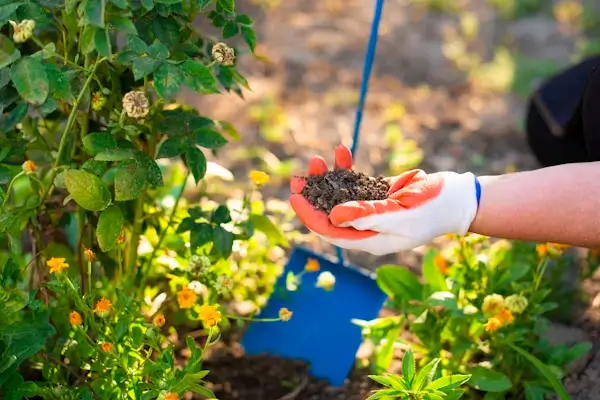
No One-Size-Fits-All Solution
Here’s the thing – every plant is different, kind of like people. What works for your pothos might kill your succulent, and your fiddle leaf fig probably has completely different needs than your snake plant. It’s all about getting to know your green roommates!
Understanding Your Plant’s Appetite
Heavy Feeders: Those big, dramatic tropical plants with huge leaves? Yeah, they’re basically teenagers – they eat everything in sight. Think monstera, fiddle leaf figs, and banana plants.
Light Feeders: These are your low-maintenance friends. Pothos, snake plants, ZZ plants, and especially succulents don’t need much. In fact, succulents prefer the fertilizer equivalent of a light salad – something like a 1-7-6 ratio that won’t make them grow too fast and get all soft and weird.
Growth Stage Nutrient Shifts
Baby Plants: Seedlings are like human babies – they need gentle, diluted food or they’ll get overwhelmed.
Growing Phase: When your plants are putting out new leaves like crazy, they want more nitrogen to fuel all that green growth.
Flowering Time: When it’s time to bloom, plants want more phosphorus and potassium to make those flowers pop.
Foliage vs. Flowering Plant Needs
Leafy Plants: These guys are all about that nitrogen life. They want to look lush and green, so feed them accordingly.
Flowering Plants: These need bloom boosters (higher phosphorus) to make those flowers bigger and more colorful. But remember – no amount of fertilizer will make a plant bloom if it’s not getting enough light. Light is like the main course; fertilizer is just the seasoning.
Considering Your Tap Water Quality
Your tap water might already have some nutrients in it, or it might have chlorine that kills beneficial bacteria in your soil. If possible, use rainwater (free and plants love it!), or let your tap water sit out overnight to let the chlorine evaporate before mixing with fertilizer.
6. Smart Fertilizing: Best Practices for Application and Timing
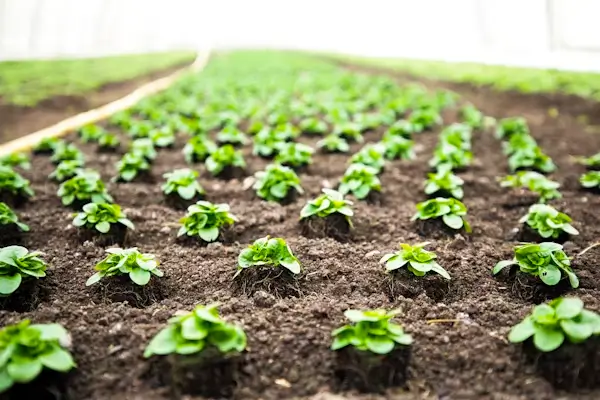
Seasonal Timing: When to Feed Your Houseplants
Spring & Summer: This is go-time! Your plants are actively growing, so this is when you want to feed them regularly.
Fall & Winter: Most plants are basically napping during these months. Feeding them now is like waking someone up just to force-feed them dinner – not appreciated and potentially harmful.
Exception: If you’ve got grow lights or a really bright, warm spot, some plants might keep growing year-round and appreciate light feeding.
The Watering-Fertilizing Partnership: Before or After?
Always water first, then fertilize. Putting fertilizer on dry soil is like pouring hot sauce directly into your mouth – it’s gonna burn, and not in a good way.
Dilution is Key: The Secret to Safety
I can’t stress this enough – dilute your fertilizer! I usually go with half-strength or even less. Better to feed more often with a weak solution than to fry your plants with something too strong. Trust me, I’ve learned this lesson the expensive way.
How Often Should I Fertilize My Houseplants?
This totally depends on what you’re using and what plants you have. Those hungry tropical plants might want weekly feeding during growing season, while your snake plant might be happy with monthly feeding.
Here’s what I do: I watch my plants. If they’re growing and looking happy, I stick with the schedule. If they start looking pale or grow slowly, maybe they need more food. If the tips of the leaves start turning brown, I back off because I’m probably overdoing it.
Common Fertilizing Mistakes to Avoid
- Don’t fall for the “more is better” trap (seriously, resist!)
- Never fertilize bone-dry soil
- Don’t feed sleeping plants in winter
- Don’t use outdoor fertilizer for houseplants (it’s usually too strong)
- Don’t spray fertilizer on wet leaves (hello, fungal problems!)
7. DIY Organic Fertilizers for Houseplants: Sustainable Solutions from Home
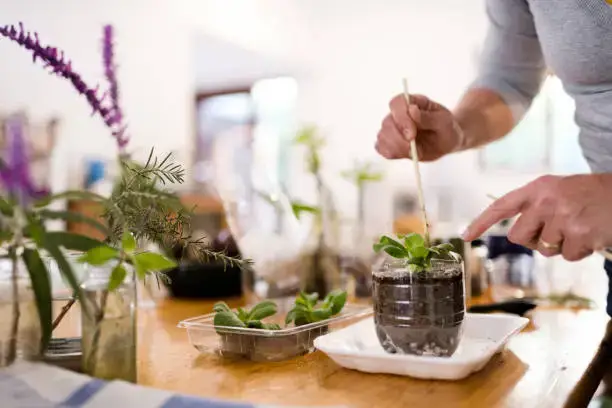
Want to make your own plant food? It’s actually pretty fun, and you’re basically composting without the commitment of an actual compost bin.
Rice Water
You know that starchy water left over from cooking rice? Don’t dump it! Let it cool down (no salt added, obviously) and use it to water your plants. It’s like giving them a gentle, starchy snack.
Pasta Water & Potato Water
Same deal as rice water – those starches and nutrients are plant gold. Just make sure there’s no salt and let it cool completely.
Eggshell Water / Crushed Eggshells
Boil some eggs and save the water for your plants – it’s got calcium and other good stuff. You can also crush up the eggshells and sprinkle them around plants (though this works better outdoors where they can actually break down).
Banana Peels
Bananas are loaded with potassium, which plants love. You can bury the peels directly in outdoor garden beds, chop them up and steep them in water for a few days (but not longer – trust me, it gets gross), or dry them out and grind them into powder.
Used Coffee Grounds
Coffee grounds are great for nitrogen, and they’re basically pH neutral once they’ve been through your coffee maker. You can add them to compost, sprinkle them around plants, or make coffee ground “tea” by steeping them in water overnight.
Bonus: they can help keep slugs and cats away from your plants, though don’t go overboard or you’ll get mold issues.
Fish Tank Water
If you have a freshwater fish tank, that water is liquid gold for your plants! All that fish waste and decomposed plant matter makes excellent fertilizer. Just don’t use saltwater tank water – that’ll kill your plants faster than you can say “Finding Nemo.”
Compost Tea
If you’ve got a compost bin, you can make “tea” by steeping some finished compost in water. It’s like making herbal tea, but for plants. Use rainwater if you can, or let tap water sit to get rid of the chlorine first.
Worm Tea/Wee
If you’re into worm composting, the liquid that drains out is basically plant superfood. It’s free, it’s amazing, and your plants will absolutely love it.
The bottom line with DIY fertilizers: they’re gentle, sustainable, and kind of fun to make. Just don’t expect miracle overnight results – these work slowly and steadily.
8. Troubleshooting Common Fertilizer Problems (and How to Fix Them)
Spotting Fertilizer Burn (Over-fertilization)
Warning signs: Brown, crispy leaf tips, weird dry patches, pla-nts wilting even though the soil is moist, and white crusty stuff forming on the soil surface (that’s salt buildup – not good!).
The fix: Give your plant a thorough shower by running water through the soil to flush out excess nutrients. For really bad cases, you might need to repot with fresh soil. And obviously, lay off the fertilizer until things improve!
Recognizing Underfed Plant Signs (Nutrient Deficiency)
What to look for: Pale, yellowish leaves, growth that’s basically stopped, brown edges on leaves, or leaves just dropping off for no apparent reason.
The solution: Time to adjust your feeding game! Start with a gentle, diluted fertilizer and gradually work up to regular feeding.
Fertilizing Sick Plants: A Risky Business
If your plant is already stressed or sick, fertilizing is like offering a five-course meal to someone with food poisoning. Focus on fixing the actual problem first – root rot, pests, or environmental stress. Once your plant is healthy again, then you can start feeding it.
Why Outdoor Fertilizer is Not for Indoors
Outdoor fertilizers are like energy drinks for pla-nts – way too intense for your delicate houseplants. They’re formulated for pla-nts that have much more soil and root space to handle all those concentrated nutrients.
9. Top Commercial Fertilizers: What to Look For
Balanced NPK Fertilizers (e.g., 10-10-10, 20-20-20)
These are like the Swiss Army knives of plant food – good for a bit of everything. Great if you’ve got a mixed collection of pla-nts and don’t want to buy a different fertilizer for each one.
Nitrogen-Rich Fertilizers
Perfect for those lush, leafy pla-nts that you want to look like they belong in a magazine. Look for numbers where the first digit is higher than the others.
Phosphorus-Rich Fertilizers (Bloom Boosters)
These are for when you want your flowering pla-nts to really put on a show. The middle number will be higher, and they’re especially great for orchids, African violets, and peace lilies.
Organic Liquid Fertilizers
There are some really good organic options out there made from things like fish emulsion, seaweed, and even insect waste (sounds gross, but pla-nts love it!). These tend to be gentler and improve your soil health over time.
Specialty Formulations
Some companies make fertilizers specifically engineered for different growth stages or plant types. These can be worth it if you’re really serious about your indoor plant care game.
10. Conclusion: Cultivating a Greener, Healthier Indoor Oasis
Look, finding the best fertilizers pla-nts need isn’t about finding one magic solution – it’s about understanding what your specific plants want and giving it to them consistently. Some pla-nts are high-maintenance divas, others are chill and low-key. The key is figuring out who’s who in your plant family.
The whole organic versus synthetic thing? Honestly, both have their place. Organic plant food is great for long-term soil health and sustainability, while synthetic can be a lifesaver when you need quick results. Don’t feel like you have to pick a team – use what works for your situation.
And here’s the most important thing I’ve learned: indoor plant care is way more than just fertilizer. Your pla-nts need good light, proper watering, decent air circulation, and the right pot size. Fertilizer is just one piece of the puzzle, but it’s a pretty important piece.
Start small, pay attention to how your pla-nts respond, and don’t be afraid to experiment a little. Every plant parent kills a few plants while learning – it’s basically a rite of passage. The key is to learn from those mistakes and keep trying.
Your home can totally become that lush, Instagram-worthy plant paradise you’ve been dreaming about. It just takes some patience, observation, and maybe a little trial and error. Trust me, once you start seeing your pla-nts thrive, you’ll be hooked on this whole plant parent thing!
Ready to give your green babies the nutrition they deserve? Start by taking a good look at what you’ve got, maybe test your soil if you’re feeling fancy, and pick a fertilizer that matches your plants’ needs and your lifestyle. And hey, share your wins (and failures) with other plant people – we’re all learning together!
Best Fertilizers Plants for Indoor and Outdoor in 2025
So you’re trying to figure out what best fertilizers plants need to actually thrive instead of just survive? I totally get it! I used to be that person who’d water my plants and wonder why they looked sad and droopy. Turns out, they were basically starving. Who knew? Looking to take your plant care to the next level? Check out our handy product that makes maintaining healthy, thriving plants easier than ever.

